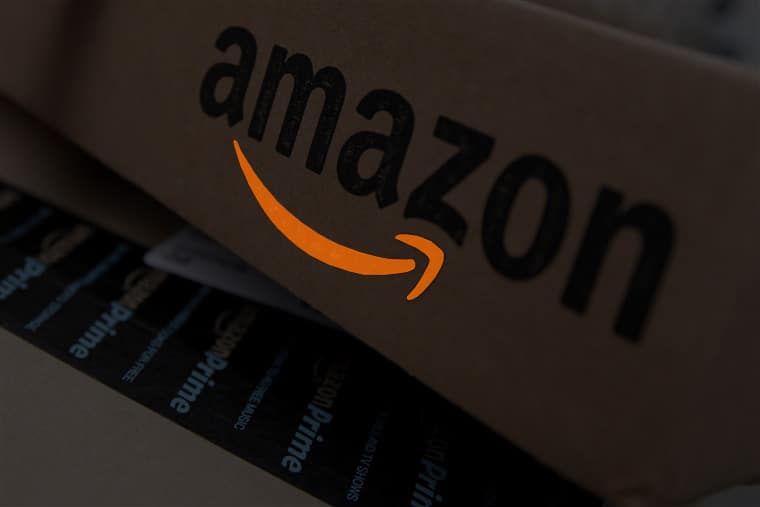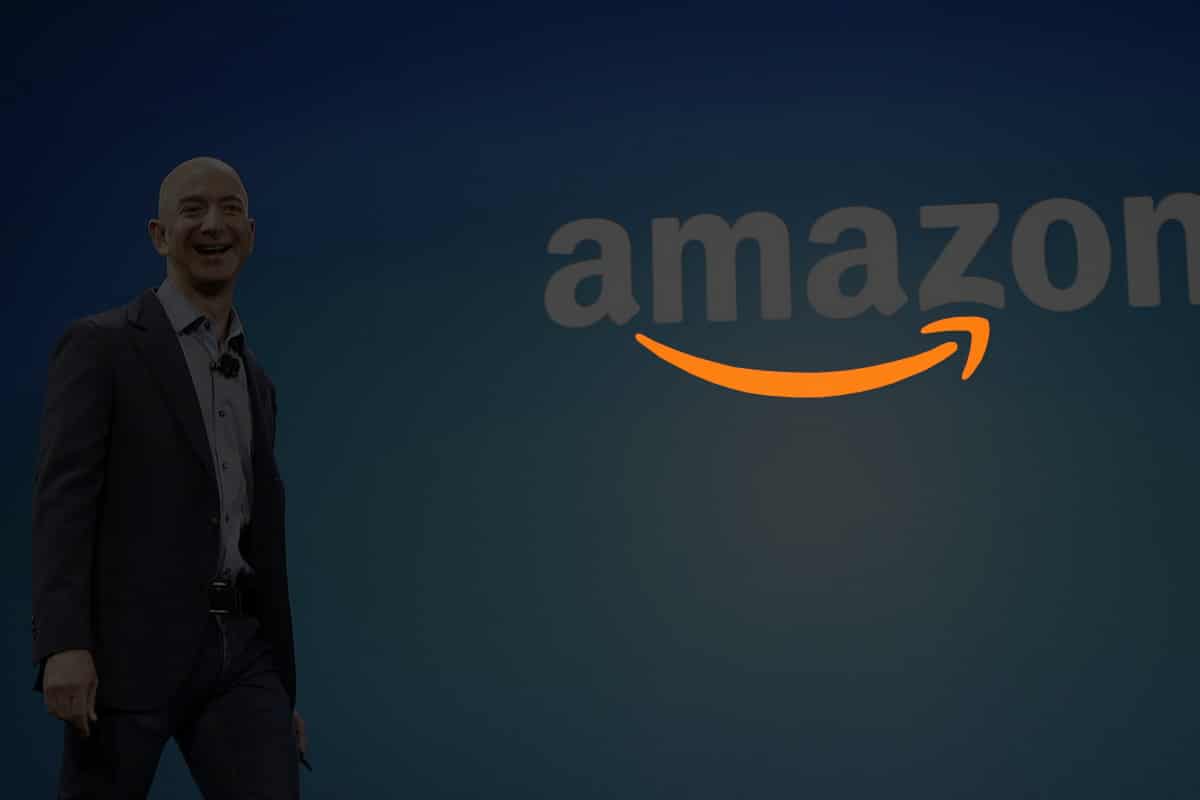3 min read
Podean’s Founder & CEO On His New Book – Amazon For CMOs
Post written by Mark Power, Founder & CEO Podean Amazon For CMO’s launches September 24. Reserve your free Kindle version now. “Hey Mark, I have a...

When you consider the scale and reach of Amazon today, it’s hard to believe that it all started in its founder’s garage. Yet that’s exactly where Jeff Bezos launched the online bookstore that would explode into a world-beating phenomenon.
In those early days, Bezos and his employees would pack books and bring them to the post office themselves, and even after the company began to build warehouses and acquire more assets, many investors still wrote them off as another dot-com pipedream.
But in the 26 years since, Amazon’s progression from bookseller to the world’s leading ecommerce marketplace has been astonishing, even if – according to the architect of its rise – building the “everything store” was all part of the plan from the beginning.
Of course, even Bezos couldn’t have mapped out every twist and turn, as our selection of key turning points in Amazon’s journey from garage to the globe proves.
1984: The math problem that led Bezos to switch career paths
During Jeff Bezos’ time as a student at Princeton, he had planned to pursue a career in physics or math; that is until he was faced with a partial differential equation he couldn’t solve. Bezos and his roommate together spent three hours trying to figure out the answer to the problem, until they finally decided to seek the help of another fellow classmate, Yasantha Rajakarunanayake.
Yasantha was able to solve the equation rather quickly and seemingly easily, and, according to Bezos, that was when he realized that he was not meant to pursue a career in the fields of math or physics – instead, he graduated Princeton with degrees in electrical engineering and computer science.
Bezos believes that “in most occupations, if you’re in the 90th percentile, you’re going to contribute something in your field. However, in theoretical physics, you have to be one of the top 50 in the world or you’re not helping as much.” So he reevaluated his career path and decided to pursue other things, ultimately leading to the creation of Amazon. Without this unusual epiphany in a college dorm, Amazon would have never been.
1994: Laying the foundations in Seattle
Jeff Bezos launched Amazon as an online bookstore, and strategically chose Seattle, Washington as the home base location. Due to Washington’s lack of sales tax, it allowed Amazon to sell nearly all over without having to collect sales tax from its customers.
Bezos financed Amazon with $10,000 of his own money to get things rolling; he and his wife, MacKenzie, along with a small staff, operated Amazon at its early stages from that garage in his rented home in Bellevue, Washington. Seattle remains Amazon’s home today, though Bezos has moved his property game on somewhat, with homes all over the US (and beyond), including a $165m Beverly Hills mansion with its own golf course. And, you’d imagine, quite a few garages.
1994: What’s in a name?
Jeff Bezos originally had the idea to give the company a magical-sounding name, with “Cadabra” top of his list. However, after seeking counsel on the matter, it was decided that the name could easily be misunderstood as “cadaver” over the phone.
Another serious contender in the early days was the name “Relentless.” Even today, you can visit Relentless.com and it will redirect you to Amazon.
Bezos finally made the decision to go with “Amazon”, named after the largest river in the world (his goal was to lead the company to become the largest bookstore in the world.) He thought of the idea while looking through the dictionary, specifically targeting names that began with “A” as he believed it would give the company the advantage of being listed higher in alphabetized lists.
1997: Getting the public involved
Amazon went public with a $300 million valuation at $1.96 per share (adjusted from $18 after subsequent stock splits.) If you were to have invested $1,000 into Amazon shares IPO in 1997, those shares would have been worth over $1,137,000 by the end of 2019.
With Amazon’s rising success, the company quickly became a target of some of its larger competitors, drawing lawsuits from both Barnes and Noble and Walmart shortly after going public.
1999: Amazon allows third-party sellers
Amazon moved into a whole new area of business as it began to allow third-party sellers to move merchandise through the site. Originally this was pitched as an idea to aid consumers in finding rare and unusual products and specialty items, but as we all know now, it turned into so much more than just that. Within the first four months of third-party selling, over 250,000 customers had bought something through a third party on Amazon.
2005: “Priming” the ingenious loyalty program
During an earnings call in 2005, Jeff Bezos announced a customer loyalty program that offered free two-day shipping on any order, along with other perks and benefits for only $79 per year. Prime has proved to be a massive success: it now has more than 112 million members across the globe.
With the beginning of Amazon Prime came the great rise of customer appreciation and loyalty towards the company. Even from the early days of Amazon, Bezos set his sights on customer obsession and ultimate customer satisfaction, and Prime cemented that idea into reality. Simply put, the convenience and accessibility to goods that Prime offers – not to mention other benefits, including TV and music – is the ultimate expression of Amazon’s quest to deliver absolute satisfaction to its customers.
In 2019 the average Amazon Prime member in the U.S. spent $1,400 on Amazon.
2015: Raising the bar
Amazon had been developing the Echo (and Alexa capabilities) since 2011, and finally began selling the devices in June 2015. The idea of an in-home virtual assistant was novel and exciting for many, but few realized just how big it would become in such a short time.
The most popularly bought Alexa-equipped device is the Echo Dot, but recently Amazon has been linking Alexa with numerous smart home devices and updating Alexa’s functions daily. Amazon has now sold over 100 million Alexa equipped devices, and the sales are expected to continue to grow rapidly.
2020: Navigating Covid-19
No organisation has escaped the worldwide impact of the Coronavirus pandemic, but few have been such prominent players as Amazon. With Bezos stepping back into the day-to-day running of the company, Amazon has faced criticism for not protecting workers, been at the forefront of a mass consumer pivot to ecommerce and, depending on who you ask, is either losing or benefiting considerably from global lockdown. However you look at it, it seems likely that Covid-19 and its lasting effects will shape Amazon more than any other event in its history.

3 min read
Post written by Mark Power, Founder & CEO Podean Amazon For CMO’s launches September 24. Reserve your free Kindle version now. “Hey Mark, I have a...

The Covid-19 pandemic has been, and continues to be, the most disruptive force in global economics since World War Two, but throughout it one company...

Live streaming is more popular now than ever before, with platforms like Twitch, Facebook Live, and Youtube Live the industry is booming! Of course,...
